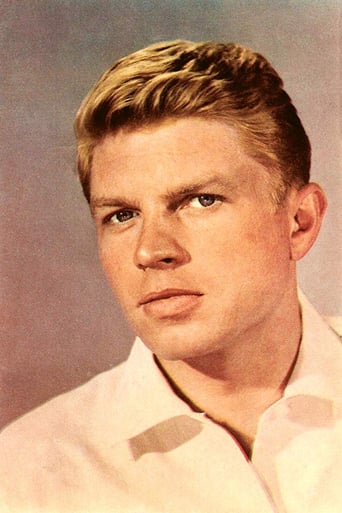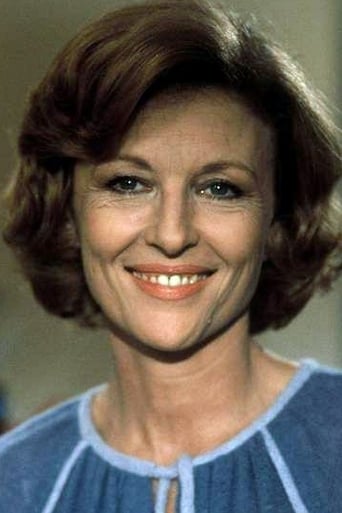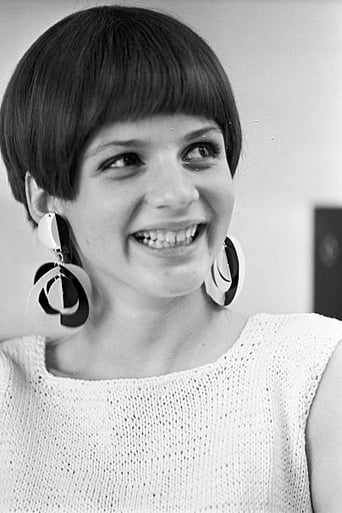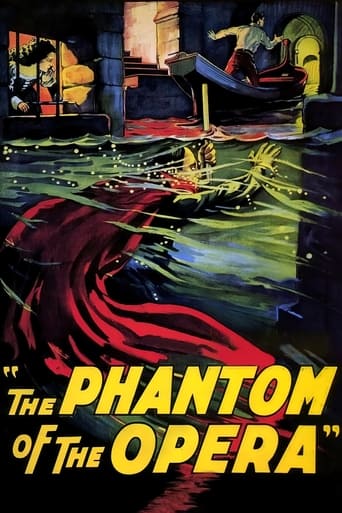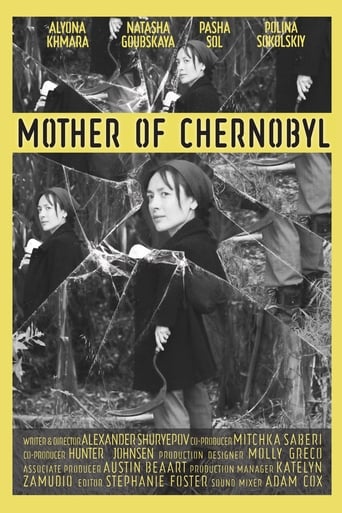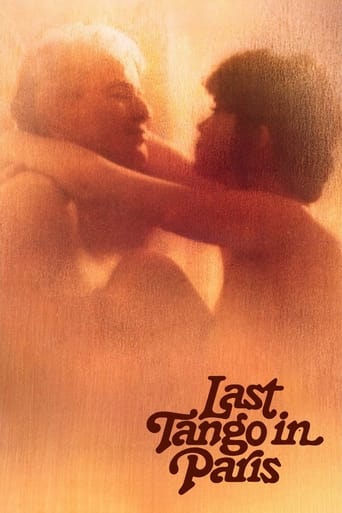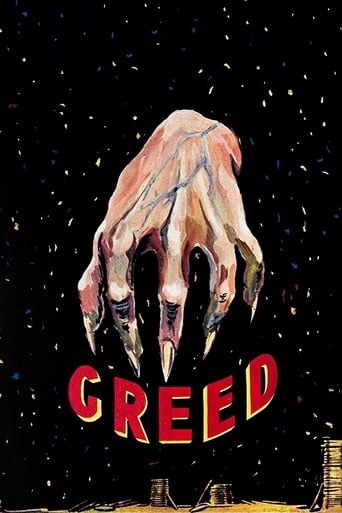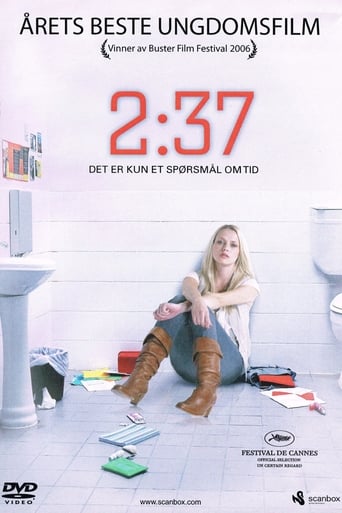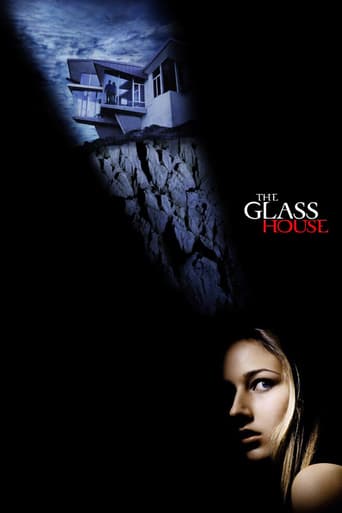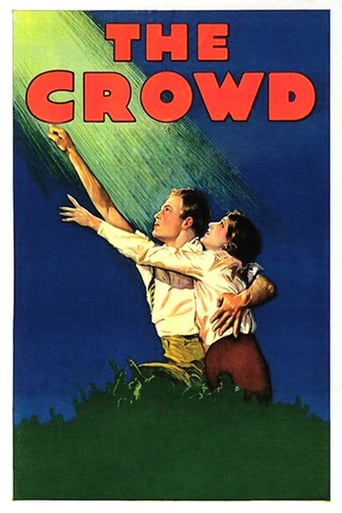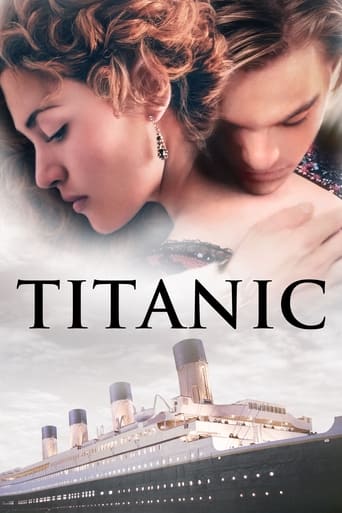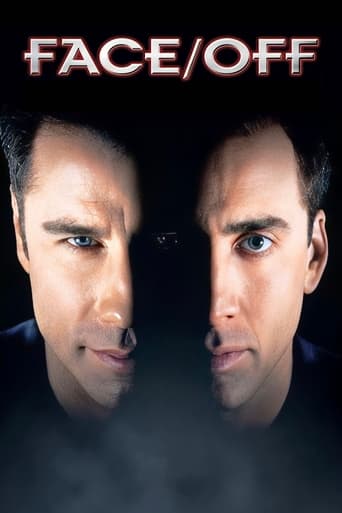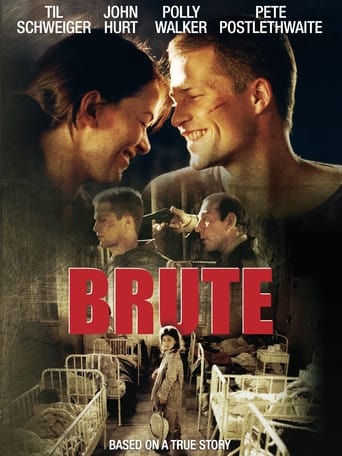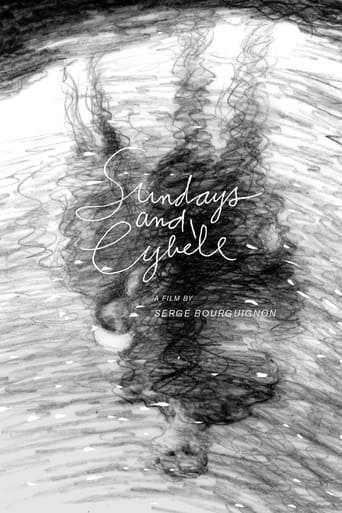
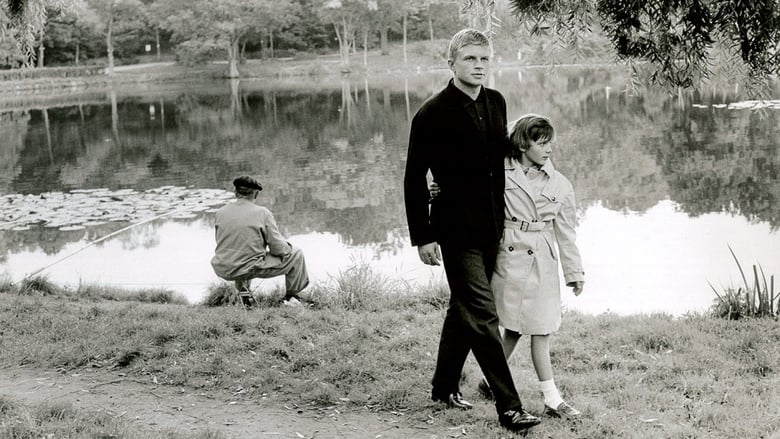
Sundays and Cybele (1962)
The tragic story of a young orphan girl who is befriended by an innocent but emotionally disabled veteran of the French Indochina War.
Watch Trailer
Cast


Similar titles
Reviews
The Worst Film Ever
Am i the only one who thinks........Average?
All of these films share one commonality, that being a kind of emotional center that humanizes a cast of monsters.
One of the worst ways to make a cult movie is to set out to make a cult movie.
This film's subject was risqué fifty years ago, and it remains so even now. How can one make us believe in the delicate charm of this wondrous love story between Pierre (Hardy Krüger) a shell-shocked, amnesiac, thirty-something man and a lonely twelve-year-old child, Cybèle (Patricia Gozzi) without promoting or raising the specter of pedophilia? It is the intense love story of incredible purity, a love that the cynical adult world cannot understand and will eventually condemn. Reading this film's synopsis, one immediately thinks of Lolita, except for the fact that in Sundays and Cybele the adult man is not the sexually obsessed Humbert Humbert and the young girl is not the treacherous nymphet, Dolores Haze. Under Director Serge Bourguignon, Sundays and Cybele becomes an authentic masterpiece, deeply moving, a film touched by grace and poetry, which is made even more miraculous by its controversial subject.The relatively small cast is brilliant, starting with Patricia Gozzi's extraordinary portrayal of Cybèle as an extremely feminine, intelligent, and enchanting little girl. She plays this character with astounding insight, evoking the apparent understanding of a mature woman. Her attachment to Pierre is a mixture of her budding sexual stirrings and of the impulses to reach for the male affection she has never known in a loveless, broken home. Gozzi is without a doubt the finest child actress I have ever seen. Hardy Krüger fulfils his difficult role of Pierre with panache, as a misfit on the margins of society. He portrays a man whose life has been shattered, and who is desperately trying to find a way out of his amnesia and vertigo, to start anew, and in the process of his healing, Pierre becomes as much of a father to Cybèle as he is her big brother, her boyfriend, and even her son.Nicole Courcel, as Madeleine, acting underscores her well-deserved reputation in the role of a loving and understanding mistress who has brought Pierre to physical health and is patiently trying to restore his mental health through her unconditional love. Daniel Ivernel, as Carlos, is also excellent in his role as Pierre's best (and only) friend and confident, a man who has tried to understand and accepted his friend's relationship with the young girl.Sunday and Cybele is based on the eponymous novel by Bernard Echassériaux. This was Serge Bourguignon's feature film debut (and what a debut!) and it became his magnum opus. Besides the grace of the cinematic conceit and the dialogue, Bourguignon's mise-en-scene is praiseworthy from beginning to end: instead of physically and literally recreating an imaginary world, he suggests its reality through its magic. For example, there is a traveling framing of Pierre's and Cybèle's reflections in the water rather than on them directly, as well as the many contemplative shots of nature during which the dialogue is superimposed. The camera behaves as another character, a silent witness intimidated by their love, who does not dare to look them directly in the eyes, lest their innocence be corrupted. With these simple effects, Bourguignon renders the beauty and purity of their union – and also its fragility. The film puts great emphasis on intimate, silent scenes, such as the walks along the pounds and in the forest, in the cold and the mist of the winter Sundays. Although this film was made during the birth of the Nouvelle Vague, Bourguignon's film is closer to the poetic realism of Carné, Renoir, and in particular the tone in René Clément's Forbidden Games (1952). The setting is Ville d'Avray, a small community near Paris which at the time of the filming had still retained its rustic setting, its forest with its hunting roads and famous pounds which so inspired the painter Jean Batiste Corot. The sublime photography in black and white is by Henri Decaë, who has 84 films on his résumé, including such memorable films as Louis Malle's The Lovers (1958) and François Truffaut's The 400 Blows (1959). Maurice Jarre's discreet and beautiful musical score, together with a very appropriate old French song ("Aux marches du palais"), and other musical excerpts ranging from Tibetan music to works by classical composers including Thomaso Albinoni and Marc-Antoine Charpentier, and exquisite natural sounds, creates an other-worldly, timeless atmosphere.As mentioned above, the film's subject, the relationship between an adult man and a young girl, might be extremely controversial. Although no sexual relation is ever suggested between Pierre and Cybèle, their relationship being primarily emotional in nature (in Greek mythology, the goddess Earth Mother Cybele had a eunuch mendicant priesthood). Nevertheless, many viewers and critics were none the less shocked and outraged. Times have not much changed: at a recent screening of the film at a ciné-club a few years ago, many viewers were appalled that such a "eulogy to pedophilia" could be shown. The strength of Bourguignon's film is the subtlety and sensitivity with which the subject is handled. He never looks for the shocking or the melodramatic, or poses himself as a moralist. He is simply an emotional witness to the story where a child who has grown perhaps too fast and an adult who has reverted to childhood meet and emerge from their individual loneliness. Bourguignon distances himself from the melodramatic by adopting an outsider's point of view: his genius has been to put the viewer in the position of Madeleine and Carlos, rather than that of Pierre and Cybèle. Choosing the latter for the viewpoint would certainly have been detrimental to the film, manipulating the viewer's emotions to the extreme. Following Bourguignon's suggestion, we should become a Madeleine or a Carlos, merely observing, and through our observations, try to understand
In my view, the reason why this Foreign Language Oscar-winning film is mostly forgotten today is not because it is, as the late British critic Leslie Halliwell opined as early as 1977, "a fashionable film of its time which now has little to offer" but because its director is, unenviably, the veritable cinematic embodiment of a 'one hit wonder'. Unsurprisingly, the accolades which accompanied SUNDAYS AND CYBELE opened for its undeniably talented director Serge Bourguignon the doors of Hollywood but, perhaps just as predictably, his work there never amounted to much and, sadly, 7 years and 3 films later, he dropped completely out of sight and mind. For the record, I did get to see his first Hollywood foray THE REWARD (1965; with Max von Sydow and Gilbert Roland) which, indeed, promised much but delivered very little and, for what it's worth, his next 2 ventures TWO WEEKS IN September (1967; with Brigitte Bardot and Laurent Terzieff) and THE PICASSO SUMMER (1969; with Albert Finney and Yvette Mimieux) while also seemingly interesting are, by all accounts, respectively bland and boring!Anyway, the strikingly-directed SUNDAYS AND CYBELE deservedly beat notable competitors like Michael Cacoyannis' ELEKTRA and Nanni Loy's THE FOUR DAYS OF NAPLES (both of which I also own but, so far, am only familiar with the former) at the Oscars, with its moving and, ultimately, tragic story of a misunderstood friendship between an amnesiac 30-year old fighter pilot (Hardy Kruger) and an abandoned, precocious 12-year old schoolgirl (Patricia Gozzi); Maurice Jarre's score was also, rather unaccountably, nominated for an Oscar in view of the fact that it makes copious use of classical pieces and Gregorian chants. Over the film's opening credits, Kruger is shown mowing down a child during an air raid a traumatic event which left him so guilt-ridden that the vile abandonment of the little girl by her father at a railway station is unbearable to him to the extent that he impulsively takes to impersonating him every Sunday, picking her up at her convent school and going on afternoon outings in the woods. Meanwhile, Kruger is being cared for and lives with his nurse (Nicole Courcel) and has bonded with a friendly sculptor (Daniel Ivernel) who, while appreciating the soothing effect the meetings with Gozzi are having on Kruger, also fear that his violent mood swings may eventually endanger the girl. Events come to a head during an enforced wedding party and the subsequent visit to a fairground and, especially, the fatal intervention of the nurse's jealous colleague who brings in the Police when Kruger goes missing on Christmas Eve. As I intimated earlier, the potential sentimentality of the story is kept admirably at bay by the ultra-stylish handling and excellent performances all round; conversely, the main flaws of the film, are a rather deliberate pace and a slightly misjudged ending: while I found the choice to have Kruger's demise occur offscreen effective, I think it would have been even more so had Kruger fallen to his death while trying to steal the all-important (to Gozzi) weathercock off the church steeple rather than being shot dead by the Police for approaching Gozzi with a knife clasped in his hand! The print I saw was a serviceable but very battered one (extremely soft, with a virtually inexistent blackscale and the hard-coded white subtitles occasionally unreadable when appearing against the snowy landscape) which again points to the unfortunate neglect this film has been subjected to over the years.
I loved this movie so much that my husband and I held our small wedding lunch at the Cabassud restaurant in Ville d'Avray, on one of the two lakes painted so often by Corot and featured prominently in the film. Several years later, when my daughter married, we held a much grander wedding party for her in the same place, attended by many members of the French film colony. It happened to be the evening of the annual Ville d'Avray festival, and quite unexpectedly a procession of people carrying torches appeared out of the night to march around the lake. The wedding was as magical as the film that inspired it. Sadly, I think the film has been mostly forgotten in the United States, but one that can inspire so much romance should be revisited.
I would definitely put this film in my list of the top ten films of all time. There is a distinctive, other-worldly quality about this film that I have not seen before or since. Patricia Gozzi is absolutely breathtaking as Cybele. She is almost the mother figure in her relationship with 30-something year-old Pierre. It must've been the era, or the black and white photography, or just the way the actors and the setting were filmed but, it's one of those pictures that you can't describe, you must experience, to get the joys from it. Although I don't get affected by what most people call art, this film, to me represents the highest form of art, and it affected me greatly as a human being.


